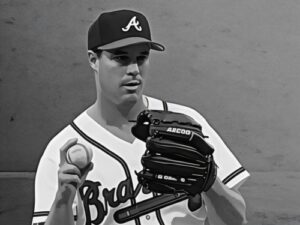The 1979 season was the only time a manager decided to write Mario Mendoza’s name regularly into his lineup. Previously, Mendoza had been a light-hitting but helpful infielder. A “good glove, no hit” type. But the 1979 Mariners had nothing to lose, except more games.
More than a month into the season, a few of Mendoza’s teammates, Bruce Bochte among them, were teasing him about his anemic batting average, which was .189 in mid-May. The Mariners were playing the Royals that month when Bochte razzed Kansas City star George Brett. At the time, Brett (a former batting champion) was sporting a batting average that hovered around .240, far below his normal level.
“If you aren’t careful,” Bochte said, “you’re going to drop below Mendoza.”
The conversation lit a fire under Brett, who started to lift his batting average soon after. But during an interview a few weeks later with Chris Berman of ESPN, Brett recalled the details of that encounter with Bochte. He told Berman he was worried he would open the Sunday paper and see his average had dropped below “the Mendoza line.” Soon, Berman was repeating the phrase in broadcasts.
The Mendoza Line soon became a popular phrase, and it remains the standard by which batters measure their batting slumps.
What is the Mendoza Line?
It’s come to mean a batting average that dips below .200.
Ironically, Mendoza, who played nine seasons in the major leagues, had a career .215 batting average. But he hit below .200 five times, including a .198 mark in 1979, when he appeared in 148 games for the sixth place Mariners. He was slick with the glove however, and Mendoza was eventually elected to the Mexican Baseball Hall of Fame, where he hit .291 in that country.
Bruce Bochte was an All-Star in 1979 and he hit .316 that season. Brett was too good to stay down long: he batted .329 in 1979, and the following season he hit an incredible .390 as he challenged baseball’s .400 mark (or whould we say “The Double Mendoza Line”?) Brett was elected to the Baseball Hall of Fame in 1999, and he ranks among the greatest third basemen in history. His contribution to the establishment of one of baseball’s most interesting phrases only adds color to his legend.






